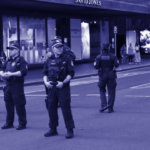Women Barristers Paid Less than Men

The majority newly admitted lawyers in NSW are women, making up 63% of all law graduates. But only 20% of barristers are female, and they get paid a lot less than their male peers.
Last week, the NSW Bar Association released a report detailing factors that impact upon female barristers, and the changes that law firms and barristers’ chambers need to make in order to promote gender equality.
Fewer Females and Less Pay
Being a barrister can be a challenging but incredibly rewarding career– so why do fewer women than men that pursue it, why do so few reach the level of Senior Counsel (previously Queens Counsel), and why are women paid less than men.
The Bar Association report found that the average pay of women barristers is 38% less than men – a gap that they suggested would be “unacceptable in any other industry.”
The Association believes that there are three main reasons for the pay gap:
- Women spend less hours in court gaining valuable experience when they first become barristers,
- Female barristers are less likely to be closely mentored by senior barristers than their male peers, and
- There is a perception the bar has a very male-dominated culture, which deters many women from pursuing a career as a barrister.
In a separate study, the Law Council of Australia surveyed over 4,000 lawyers in order to determine the reasons behind gender inequality in the legal profession as a whole.
The survey found that half of all female respondents reported being bullied or intimidated in the workplace. Half also reported facing gender discrimination at some point in their careers. And one in four women said they had experienced sexual harassment in the workplace.
The Council reported that these responses reflect an unacceptable state of affairs in the profession – suggesting that women face significant barriers to reaching senior positions.
Law Council President-elect Stuart Clark and Treasurer Fiona McLeod wrote in The Australian:
“It costs our profession dearly when we lose women from the workforce: in morale, productivity, human capital, the costs of retraining, lost investment and the inability to meet client expectations.”
What Should be Done About it?
The message to come out of the Bar Association report was clear: action needs to be taken, and words alone won’t be enough to address the gender disparity in the legal profession.
The Association suggested introducing fixed numerical targets for law firms to meet by 1 July 2017. Those target are for firms to:
- Give 10% of all briefs to female Senior Counsel,
- Give 20% of all briefs to female junior counsel, and
- Give 35% of all briefs to female counsel with less than five years experience
Bar Association President Jane Needham SC believes that this is: “not really asking all that much of people, even though it looks quite radical on its face.”
Many would argue against such artificial quotas, contending that briefs should be given to barristers on the basis of merit, cost and availability – not because they are women or men.
But the leader of the Working Group Party Arthur Moses is of the view that there are plenty of highly capable female lawyers around, telling the SMH that:
“Women have been overwhelmingly the best and brightest of the graduates. In order for the bar to remain strong and independent it needs not only to recruit but retain more women.”
Only time will tell whether law firms will adopt the Bar Association’s recommendations, or at least brief females barristers more often.






